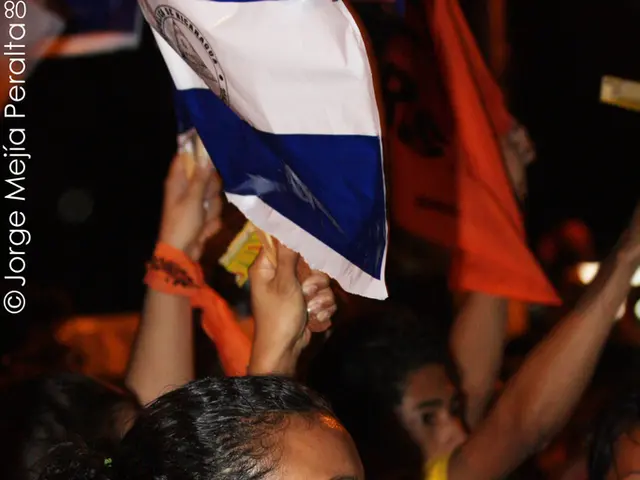Exploring Terrorist Trading Hubs: A Correlation Between Increasing Terrorist Groups and Intensity of Violence?
In the complex world of international politics, the dynamics of militant groups and their competition are a critical factor in understanding conflicts and potential solutions. This article explores the competition among militant groups, particularly in Afghanistan, and the implications for violence levels, using insights from academic research.
The Taliban, once a nonstate organization, has transitioned into a state actor, reducing the number of insurgent groups in Afghanistan. This shift, however, has not diminished the threat of violence, as other groups like ISIS-K have stepped up their attacks. ISIS-K, responsible for the gruesome attacks since the US withdrawal, including the August 26 suicide bombing at Kabul airport that claimed the lives of 13 US servicemembers, dozens of Taliban members, and 170 Afghan civilians, has been trying to corner the market of nonstate violence.
The emergence of a new group, such as ISIS-K, can have mixed effects on other groups' violence. While it may lead to an increase in violence at the aggregate level, it is not necessarily the case for each individual group. For instance, the theory of "outbidding" suggests that militant groups may compete with one another through violence as a means of advertisement. This competition can result in an escalation of violence, as seen in the developments in Afghanistan, raising concerns about a cycle of escalatory violence among Afghanistan's Islamist factions.
The Taliban, the Afghan Taliban themselves, and the Pakistan-based Tehrik-i-Taliban Pakistan (TTP) are potential contenders for leadership within Afghanistan-based groups. Tensions between these groups have led to deadly clashes on the Afghanistan-Pakistan border and accusations that the Taliban government shelters militants attacking Pakistan. These groups' competition has triggered armed conflict, resulting in soldier and militant deaths and cross-border drone attacks, exacerbating regional instability.
However, the competition among groups is not always detrimental. When facing a smaller prize, groups correspondingly reduce their violence when they compete over a smaller pool of potential recruits and contributions. In such cases, defensive measures that do not discriminate among groups can lead to reductions in violence across the board.
Government actions, such as preventing supporters from aiding terrorist groups and using informants, can also affect the level of violence caused by outbidding. For example, the Royal Ulster Constabulary in Northern Ireland reduced Republican violence in part due to its successful use of informants.
Policymakers looking to reduce violence in complicated environments should start with the basic insight of defensive measures and then consider the full strategic picture to determine the efficacy of other policies. Verbal criticisms and denunciations of lead groups by rival groups may be one indicator of the potential for competitive violence. Quantitative evidence for the effect of a new group's emergence on other groups' violence is mixed at best, highlighting the need for a nuanced approach to understanding and addressing militant competition.
Dr. William Spaniel, assistant professor of political science at the University of Pittsburgh, and Dr. Justin Conrad, the Gary K. Bertsch director of the Center for International Trade and Security and associate professor of international affairs at the University of Georgia, are among the scholars who have systematically examined the conditions under which competition is likely to produce increasing levels of violence. Their research provides valuable insights into the complex dynamics of militant competition and offers potential strategies for reducing violence in conflict zones.
Read also:
- Peptide YY (PYY): Exploring its Role in Appetite Suppression, Intestinal Health, and Cognitive Links
- Easing Pedestrian Traffic Signal Pressure
- Astral Lore and Celestial Arrangements: Defining Terms & In-Depth Insights - Historical Accounts & Glossary of Cosmic Mythology
- ICE directed to enhance detention conditions following NYC immigrants' allegations of maltreatment








